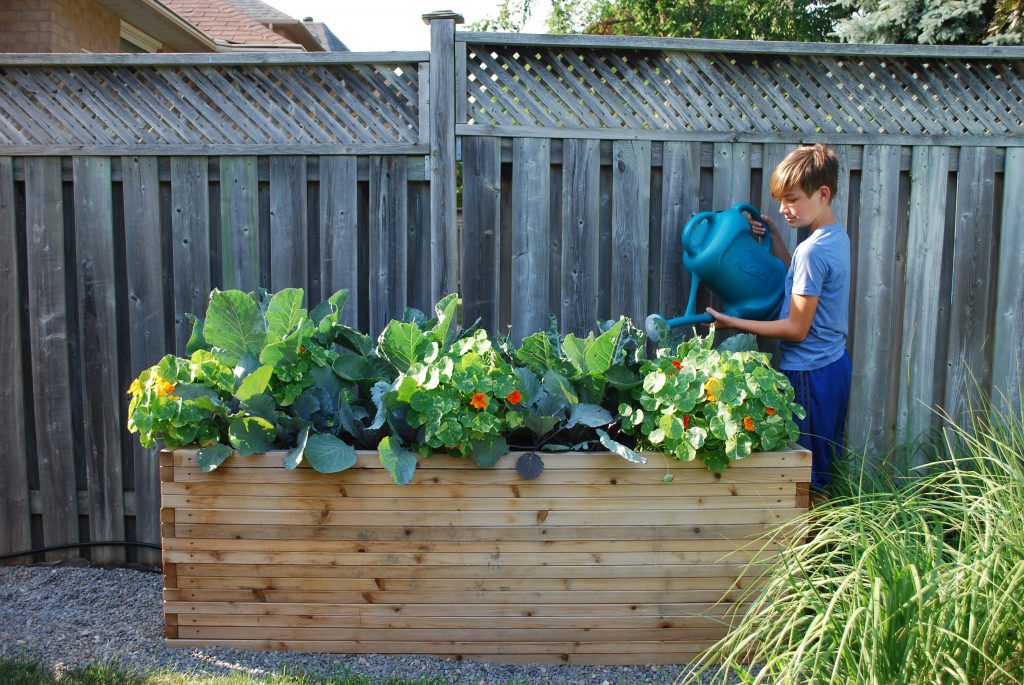
The condos that sprout like mushrooms, and all the talk about intensifying the population in our urban spaces, suggest that a lot of readers are gardening in smaller spaces.
Creating a garden of your dreams in limited space can be a blessing and a curse. The blessing is the result: more colour, bounty, and beneficial insect activity. The curse is the limitation that small space presents.
Here are our tips for creating a blessing:
Replace your lawn. When you are looking round your yard for space to plant a new garden, consider eliminating your lawn. A walk round your neighbourhood offers lessons on space conservation to the keen observer. We note that many front yards on a 20- or 30-foot lot in Toronto are often filled to brimming with colour and food plants, sans lawn area. Lawns are useful for walking on, or as a filler where space can be afforded, though they offer very little in the way of ecological services to wildlife and retain relatively little stormwater. And think of the shed space you can free up by getting rid of that lawnmower!
Go up. Look up at the balconies in your building from the ground, note how many are using fences, walls, and trellises to support vertical gardens. While there are many vines that are self-clinging, like euonymus and Boston Ivy, others twine, like Trumpet Vine (celestrus scandens), clematis, and even grapes. However, many plants lend themselves to being trained vertically. Tomatoes, for example, can grow up to three metres high when they are secured to a fence or other support with twine. Just make sure there is lots of sun for them to set fruit and produce a harvest. A dwarf apple tree can be pruned in two dimensions against a sunny wall.
Containers. Raise your garden up and do less stooping, eliminate weeds, and take full control of the soil by using a quality container mix. You will find that you naturally plant more densely, and your containers are more productive per square metre than grade-level gardens. Note that raised beds and containers absorb the heat of sun earlier in the season and your garden gets off to an earlier start as a result. A container also allows you to easily move tropical plants for overwintering indoors, such as banana or citrus trees.
Look for compact plants. Many plant species are available in smaller growing varieties: a good dwarf lilac is Korean Spice lilac, plus dwarf burning bush, most of the new hybrid spiraeas are compact and even cucumbers are available in smaller growing formats, like Spacemaster or Sweet One Million tomatoes. Trees that are not space-hogs include crabapples, Japanese Tree Lilac, flowering cherries, and pears and even most honey locust trees, which produce a lovely, filtered shade and lend themselves to pruning.
Look over the selection of plants at your garden retailer and ask for “compact growing varieties”. A knowledgeable salesperson will steer you right.
Remember that you live here. Small yards can be filled with colour and greenery but consider how you want to live out there. Carve out a place for sitting, eating, and entertaining in your garden plan and paths to access the corners. Encourage visitors to stroll through your creation even if you put them through only a handful of paces. A short walk through a friend’s garden stimulates all the senses and encourages deeper conversation.
Water. No garden is complete without a small water feature, even a container filled with water plants and a handful of goldfish. The effect is calming and has the ability to attract beneficial insect life and birds.
Small space? Don’t let anyone kid you: your yard holds an abundance of potential.
Mark Cullen is an expert gardener, author, broadcaster, tree advocate and Member of the Order of Canada. His son Ben is a fourth-generation urban gardener and graduate of University of Guelph and Dalhousie University in Halifax. Follow them at markcullen.com, @markcullengardening, and on Facebook.


